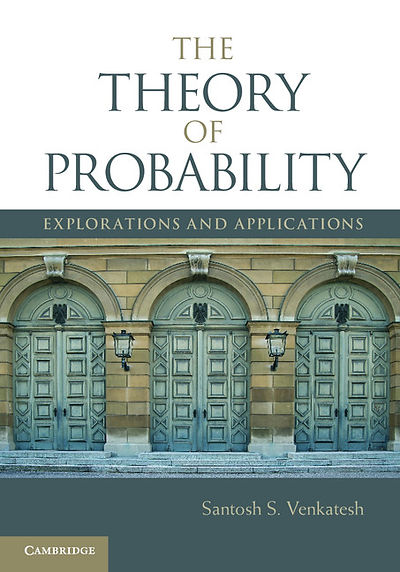Book
From its classical foundations to the advanced modern theory, this self-contained and comprehensive guide to probability weaves together mathematical proofs, historical context, and richly detailed illustrative applications. It is suitable for advanced undergraduates with a solid mathematics preparation, graduate students in theoretical disciplines, and researchers in pure and applied probability who wish to stay abreast of the remarkable developments of the late twentieth century.

Clockwise from top: modelling stock markets via Brownian motion; fractal curves and continuous, nowhere differentiable functions; Dido of Tyre and Gaussian isoperimetry; a Mexican coin and the connection of coin tossing to number theory; Hilbert’s space filling curve, the travelling salesman’s problem, and the connection to concentration of measure — [select topics from The Theory of Probability].



Reviews & endorsements
'This is a gentle and rich book that is a delight to read. Gentleness comes from the attention to detail; few readers will ever find themselves 'stuck' on any steps of the derivations or proofs. Richness comes from the many examples and historical anecdotes that support the central themes. The text will support courses of many styles and it is especially attractive for self-guided study.’ — J. J. Michael Steele, University of Pennsylvania
'This book does an excellent job of covering the basic material for a first course in the theory of probability. It is notable for the entertaining coverage of many interesting examples, several of which give a taste of significant fields where the subject is applied.’ — Venkat Anantharam, University of California, Berkeley
'This book presents one of the most refreshing treatments of the theory of probability. By providing excellent coverage with both intuition and rigor, together with engaging examples and applications, [it] presents a wonderfully readable and thorough introduction to this important subject.’ — Sanjeev Kulkarni, Princeton University
'This is a remarkable book, a theory of probability that succeeds in being both readable and rigorous, both expository and entertaining … a magnificent undertaking, impeccably presented, and one that is sure to reward repeated reading.’ — Tom Fanshawe, Oxford University
'… well-written, and although the topics are discussed with all mathematical rigour, it usually does not exceed the capabilities of an advanced undergraduate student … it can be recommended without constraint as a textbook for advanced undergraduates, but also as a reference and interesting read for experts.’ — Manuel Vogel, Contemporary Physics
What readers had to say
`In college I was left with the distorted idea that probability theory is a sub-field of measure theory. Growing older it dawned on me that something else is at work in probability. Yes, probabilists do use heavily measure theoretic concepts, but they are guided by a different star I would call probabilistic thinking. I could not easily define what I mean by probabilistic thinking. You have to look at a couple of problems that motivated research in this field to understand this. I believe that the only way to understand probability is through many concrete examples.
This book has a marvelous and eclectic collection of classic and very modern examples. The author, who is clearly passionate about this stuff does a superb job presenting all the facets of these examples. The intended audience is a person with a moderate level of mathematical sophistication and the author has that person in mind at all times. He goes beyond the formalities of a proof and often he gives suggestive heuristics which are extremely helpful in unraveling the details. I have to say he does not go for the trivial. Most the examples discussed are far from trivial, many describing ground-breaking results, but they all are intellectually extremely rewarding. The historical anecdotes and the very elegant language enhance the overall experience.
The theory is very precisely presented, but it plays a secondary role to the examples. The number of topics covered may seem small when compared to the size of the book. However, what may seem to have been lost in breadth, is more than made up in depth.
This is a carefully conceived and produced nice book ideally suited to motivated beginner in probability. I open it often at random and go through an example knowing that it will brighten my day. Try it and you will be rewarded.’ — Felix Klein
